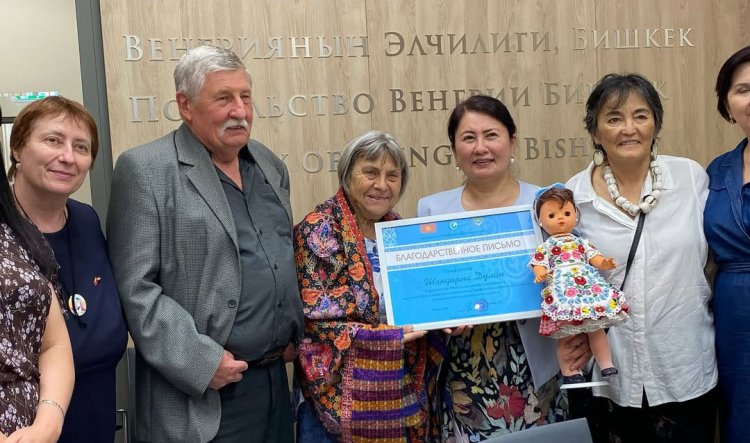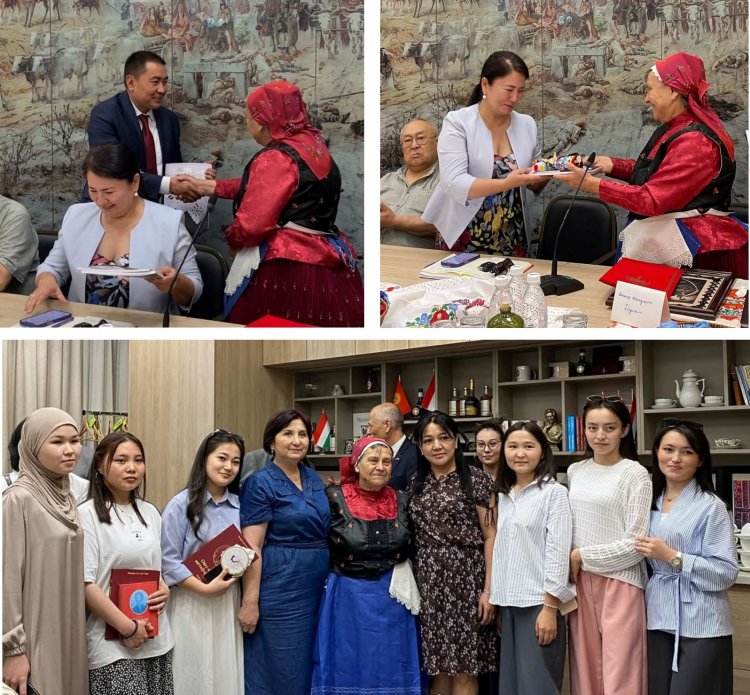CULTURAL DIALOGUE THROUGH EMBROIDERY: VISIT OF THE HUNGARIAN MASTER TO KYRGYZSTAN

Art knows no boundaries. It speaks a universal language of shapes, colors, textures, and meanings. An example of such a cultural dialogue was the visit to Kyrgyzstan of Dr. Shandorne Dulai, a master of Hungarian folk craft. Her arrival became a significant event not only for artisans and connoisseurs of embroidery, but also for the entire cultural community of the country.
Before the master class on traditional Hungarian embroidery, scheduled for May 17 at the Kyrgyz National Museum of Fine Arts named after Gapar Aitiev, a special meeting was held at the Hungarian Embassy. Representatives of the cultural and scientific elite of Kyrgyzstan gathered here — heads and staff of the Scientific Research Center for Traditional Culture and Art of the National Academy of Sciences of the Kyrgyz Republic, the International Medical University, the Eurasian International University, scientists, young researchers, artisans and students. It was not just an official meeting, but a lively exchange of knowledge, views and respect for each other's traditions.
The exposition, deployed in the exhibition corner of the embassy, allowed the guests to get to know the work of Mrs. Dulai better. Not only her embroidery and folk ceramics were presented here, but also detailed materials about the cultural significance of these products. The master's works aroused sincere interest and respect for the deep traditions of Hungarian applied art.
A special moment of the event was a master class by Shandorne Dulai herself. Under her guidance, the participants immersed themselves in the world of patterns and stitches, learning secrets that are passed down from generation to generation. It wasn't just learning techniques — it was touching the living heritage embodied in the fabric.
The event ended with a touching exchange of gifts: the leadership of the Eurasian International University expressed gratitude to the Hungarian guest, and in return she presented products created by her own hands. This symbolic gesture proved that art is a bridge connecting cultures, hearts and peoples.
Thus, the visit of Shandorne Dulai became a vivid example of how through folk art it is possible to build a dialogue between countries, strengthen friendship and preserve traditions. In a world where it is so important to hear and understand each other, such meetings become truly invaluable.







